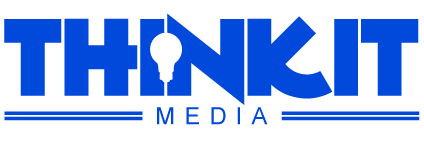Software-as-a-Service (SaaS) companies are revolutionizing the software industry by offering cloud-based solutions that provide flexible, scalable, and cost-effective alternatives to traditional software offerings. As the number of SaaS companies continues to grow, the competition to capture potential customers’ attention has become increasingly fierce. This is where SaaS SEO comes into play. By optimizing their online presence, SaaS companies can enhance their visibility, increase organic traffic, and ultimately drive more conversions. In this article, we will explore the key elements of SaaS SEO and provide some strategies to help SaaS companies maximize their online visibility.
1. Keyword Research: Effective keyword research is the foundation of any successful SEO strategy. SaaS companies should start by identifying relevant keywords that are not only highly searched but also aligned with their target audience’s intent. Tools like Google Keyword Planner, SEMrush, or Moz Keyword Explorer can help in this process. For example, if a SaaS company provides project management software, they may target keywords such as “project management tools,” “online task management,” or “team collaboration software.” By focusing on keywords that potential customers are actively searching, SaaS companies can attract qualified organic traffic to their website.
2. On-Page Optimization: Once the target keywords are identified, it is essential to optimize the website’s on-page elements. This includes incorporating the target keywords strategically in the following elements:
- Title Tags: The title tag is one of the most crucial on-page SEO elements. It should be concise, relevant, and contain the target keyword. For example, a suitable title tag for a project management software provider could be “Top Project Management Tools for Efficient Team Collaboration.”
- Meta Descriptions: Although meta descriptions do not directly impact search rankings, they play a crucial role in driving click-through rates. A compelling meta description, which includes the target keyword, can significantly increase the chances of attracting clicks from search engine users.
- Heading Tags: Utilizing heading tags (H1, H2, H3, etc.) helps search engines better understand the structure and hierarchy of the content. Including target keywords in heading tags can also provide additional SEO benefits.
- URL Structure: SaaS companies should strive for clean and descriptive URLs that include relevant keywords. For example, if a website offers customer support software, a suitable URL structure could be “www.example.com/customer-support-software.”
- Content: Producing high-quality, keyword-rich content is essential for SaaS companies. Regularly publishing blog posts, guides, or whitepapers can improve organic rankings and establish the company as an industry thought leader. By incorporating the target keywords naturally into the content, SaaS companies can increase their chances of ranking higher in search engine results.
3. Technical SEO: In addition to on-page optimization, SaaS companies must also focus on the technical aspects of their website to ensure search engines can crawl, index, and understand their content effectively. Some key technical SEO elements that SaaS companies should prioritize include:
- Site Speed: Optimizing site speed is essential for both user experience and search engine rankings. Slow-loading websites can harm organic rankings and increase bounce rates. Tools like Google PageSpeed Insights can provide insights and recommendations for improving site speed.
- Mobile Friendliness: With the increasing number of mobile users, SaaS companies must ensure their websites are mobile-friendly and provide a seamless experience across different devices. Responsive design and mobile optimization are critical for both user engagement and search rankings.
- Schema Markup: Implementing Schema markup helps search engines understand the content on a website better. By adding structured data markup to web pages, companies can provide additional information about their products, reviews, pricing, and more. This can enhance the visibility of search engine results through rich snippets and other rich results.
- XML Sitemap: Creating and submitting an XML sitemap to search engines allows them to discover and index the website’s pages more efficiently. SaaS companies should regularly update and submit the sitemap to ensure new and updated content is crawled and indexed promptly.
- Canonical Tags: To avoid duplicate content issues, SaaS companies should implement canonical tags, specifying the preferred version of a web page. This is particularly important for SaaS companies that offer similar products or services under different URLs.
By focusing on the key elements of SaaS SEO – keyword research, on-page optimization, and technical SEO – SaaS companies can improve their online visibility and attract a steady stream of organic traffic. However, SEO is an ongoing process, and it is essential for SaaS companies to continually monitor, analyze, and adapt their SEO strategies based on industry trends, algorithm updates, and user behavior. By staying agile and proactive, SaaS companies can maintain a competitive edge and effectively reach their target audience in the ever-evolving digital landscape.

